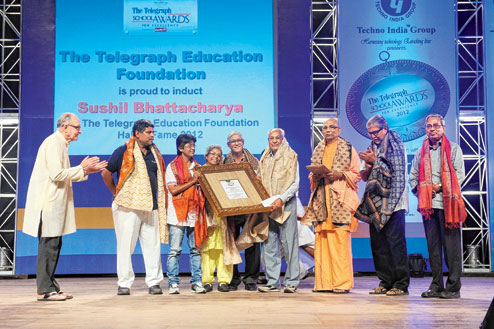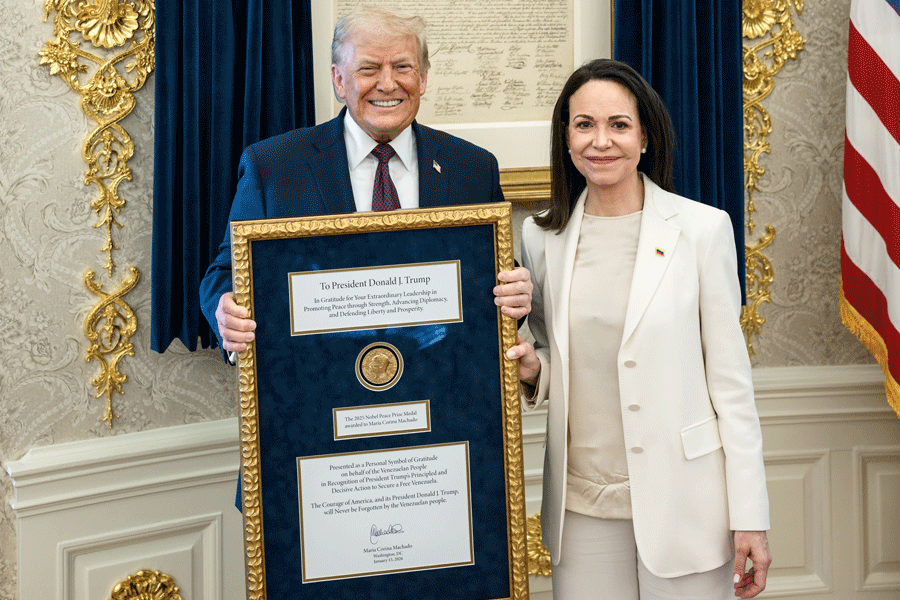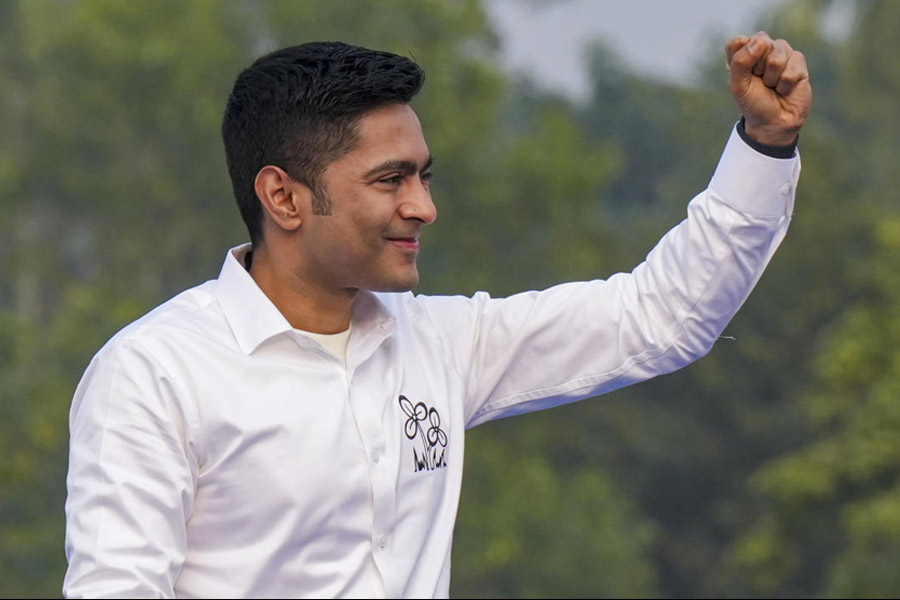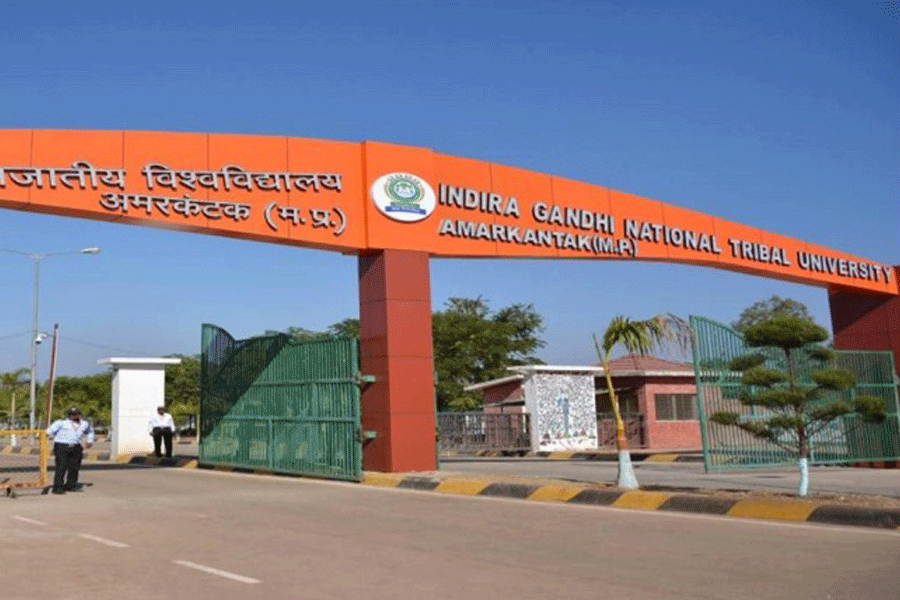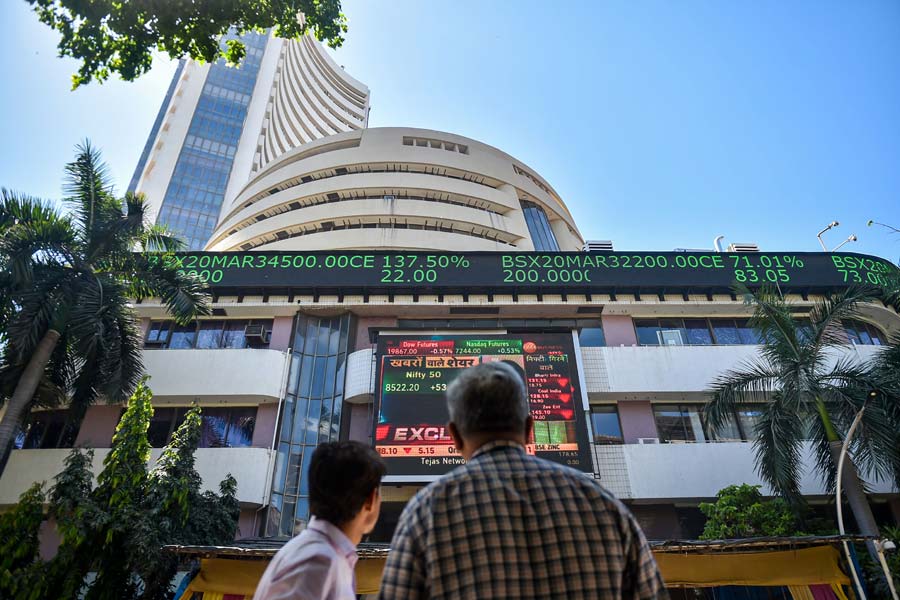 |
| Sushil Bhattacharjee being inducted into the Hall of Fame, surrounded by players he had coached. (Rashbehari Das) |
He was good with the hockey stick and even better with the cricket bat. But he was best with the football at his feet, dribbling past a host of defenders to often find the net.
Scoring goals came easy to Sushil Bhattacharjee not just as a player but also as a coach. Long after he had hung up his studs as a player, he mentored some of the niftiest feet to have graced the Maidan greens.
Bhattacharjee’s list of wards reads like the who’s who of Bengal football: P.K. Banerjee, Krishanu Dey, Shibaji Banerjee, Arun Banerjee, Subhash Bhowmick, Bhaskar Ganguly, Sukumar Samajpati, Kabir Bose, Balaram, Prashanta Banerjee, Achinta Belel, Crompton Dutta, Nili Ghosh, Kuntala Ghosh Dastidar, Shanti Mullick, Shukla Dutta and Minati Roy.
If the names who benefited from his coaching are big, the trophies and firsts in his cupboard of achievements are hard to beat.
First coach of the East Bengal football team. Winner of the IFA Shield and Calcutta Football League double for East Bengal in his first appearance as player and coach, 20 years apart. Coach of Bengal’s champion team in the first sub-junior nationals. Coach of the champion junior Bengal side. Coach of the first Bengal women’s team. Coach of the first Indian women’s team.
On Saturday, he was inducted into The Telegraph Hall of Fame at The Telegraph School Awards for Excellence 2012 by Father Andre Bruylants, former headmaster of St. Xavier’s Collegiate School.
Now 87, Bhattacharjee carries a bagful of stories of his heyday in football, all shared with the humility of a man who doesn’t need to prove that he belongs.
“When I used to play for East Bengal, names like Apparao, Venkatesh, Dhanraj, Somana and Sunil Ghosh were part of the forward line. Later, Ahmed Khan and Abid joined us. There used to be five forwards and I could play in the position of both right-in and left-in,” reminisced Bhattacharjee.
A stroke of luck gave him his first big break. He had made it to the football team of Vidyasagar College while in first year itself and the college shared its ground at Marcus Square with Sporting Union, a first division club. The skills of the 18-year-old rookie caught the eye of the Sporting management and before he knew it, Bhattacharjee was drafted into their first XI.
Before that, he had played in the IFA Shield for Town Club of Behrampore, where his uncle lived. “It was a dream come true for me playing in the top league and things moved pretty fast after that. At the start of the 1945 season, the offer came from East Bengal,” recollected Bhattacharjee.
The offer brought in its wake a dilemma that Bhattacharjee was to come face to face with frequently in the next few years and the man with roots in Bangladesh listened to his heart every time.
Maidan elders cautioned him against signing for East Bengal because in a forward line as strong as it was at the time, he would hardly get a look in. “Yet I went with my heart. Playing for East Bengal was the ultimate recognition any boy who kicked a football in the parts I hail from could dream of. Turning down an offer from them was unimaginable for me,” confided the man whose four brothers were also into sports, two of them having represented Bengal and Railways in cricket.
Bhattacharjee himself played cricket and hockey as well and has five centuries in the Maidan cricket league to show for his prowess with the willow.
The decision to sign with East Bengal didn’t seem wrong at the very start though as he played in 14 of the league matches and helped the team lift the CFL in his first year. The team went on to win the IFA Shield as well though Bhattacharjee did not feature in the final. That was something he made up for in 1947, his penultimate year for his dream team, where he featured in the line up that lifted the shield.
In between, Bhattacharjee had, however, also become close to some Mohun Bagan players and officials and they had been after his back (????) for a long time, luring him with the promise of a place in the line-up every time, something that was never guaranteed in East Bengal.
“Bagan stalwarts like Gostha Pal, Balai Chatterjee and Abhilash Ghosh, who had scored in the 1911 IFA Shield final, were like family friends and used to visit often. On one occasion, I had even signed with Mohun Bagan but then was very restless after that and withdrew my name,” said the old man shaking his head.
“It was the biggest blunder of my career and I half regret it. It’s difficult to explain. In East Bengal, I played with icons whose pictures I used to cut out of newspapers only a few years ago. I was well loved in the club, which was like a family. All that prevented me from taking the final step.”
After his final season for East Bengal, Bhattacharjee took up a job with Eastern Railway and joined its coaching sessions along with legendary soccer coach Bagha Shome.
“At that time Bagan had a coach in Balai Chatterjee, ER had Shome, Bally Pratibha had Langcha Mitra but East Bengal never had a coach. In 1961, the officials of the team approached me with an offer to take up the position as I was into football training and I became their first coach,” said Bhattacharjee as if it was no big deal.
The recruitment worked for the team and they won both the league and the shield, completing a rare double of achieving the feat both as player and coach for him.
Former India right winger Sukumar Samajpati, who was in the 1961 East Bengal side, said Bhattacharjee played a very important part in the club’s success that year. “He told us the simplest of things, like how important it was to know your strengths, to take advantage of them, and weaknesses, to work on them. He treated all the players equally and that somehow resulted in tremendous team spirit, which was us our main weapon that year.”
But the ER authorities, his employers, who also had a team that played in the top league, weren’t amused and threatened to transfer him, forcing him to end his stint as EB coach. He, however, went back to assisting Bagha Shome with the ER side till 1974, unable to stay away from the sport.
Apart from coaching these sides, Bhattacharjee also coached the Narendrapur Ramakrishna Mission boys from 1959 to ’79 and youngsters at the Veterans’ Club from 1964 to 1984.
One of the luminaries to come out of RKM was centre forward Pradip Dutta, who went on to play for India. He was also the coach of a new team — Tollygunge Agragami, from the early ‘60s to ’71, when they played the IFA Shield final — Kalighat.
The assignment the grand old man presumes was toughest was, however, was training of the first Bengal women’s team for a tournament held in Lucknow, as most of the girls didn’t know anything about the game when he began his training.
His Midas touch, of course, won Bengal the coveted title and got him the job of the first Indian women’s coach for him.
Shanti Mullick, who was in the first Bengal and India women’s teams, recounted: “I used to play handball. That’s the closest I had come to playing football. Sushilda, not only taught us the game but was more like a combination of father and mother, training us and taking care of us when we toured. He readied us for the highly demanding world of competitive sport.”
 |

